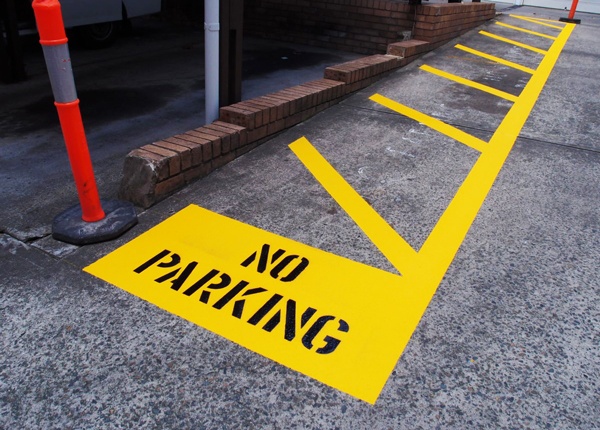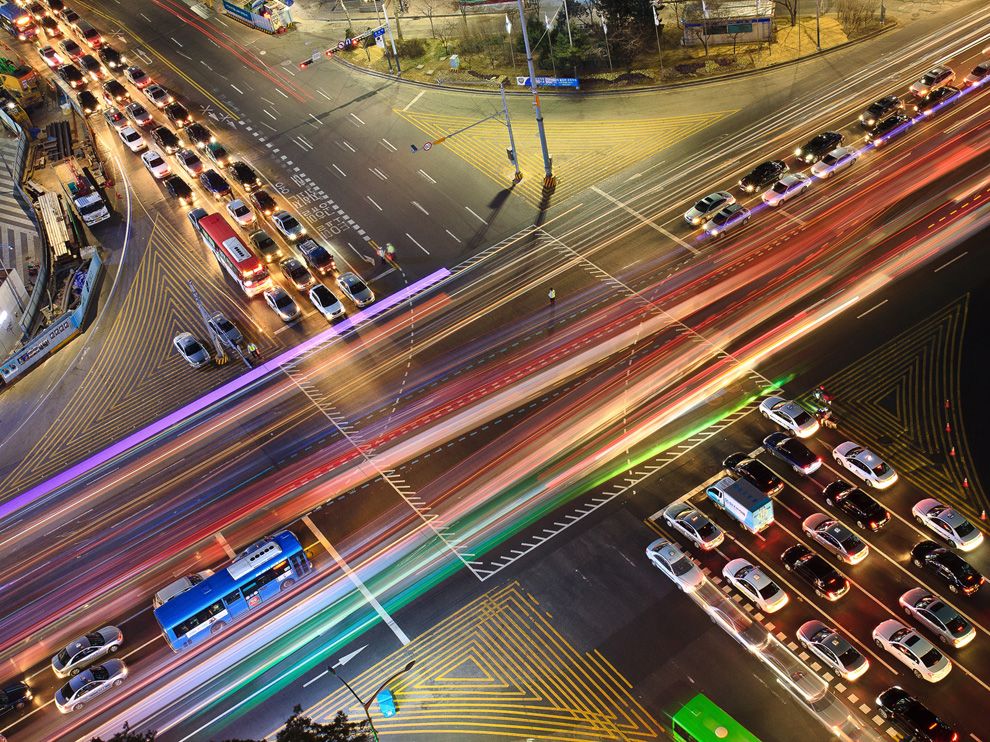
Parking Spaces and Colored Curbs: Road Markings Guide
Updated Oct. 22, 2020Parking spaces are usually partially or completely marked out with white lines, to help drivers position their vehicles. The markings allow the maximum number of vehicles to fit in a parking area while ensuring there is a safe space around each one. Motorists using parking spaces must make sure their car is completely contained (and preferably, centered) within the white lines.
Parking by the curb is permitted in some areas and prohibited in others. If there are no white-lined parking spaces to indicate that you may park in a certain area, you may need to rely on other pavement markings for information.
Colored curbs
Many states use painted curb markings of different colors to indicate restricted or prohibited parking. Unfortunately, the precise meaning of the colors used varies a little from one state to the next. Be sure to check out local information in your state’s own driving manual, as mistakenly parking next to a colored curb where parking is prohibited would likely result in a parking fine.
Red and yellow colored curbs usually mean that parking is completely prohibited. Motorists should avoid parking anywhere the curb is painted with a red or yellow strip, even if they are not certain what the precise rules are in that area. It is better to be safe and park elsewhere than risk getting a ticket!
This guide to colored curbs will give you a rough idea of how to interpret these pavement markings. Be sure to find out what the rules are in your city or state, as they may differ slightly from those listed here.
- 1

Red curbs.
Red curbs usually mean no parking, standing or stopping for any reason, at any time. Sometimes red curbs are reserved spots for buses to stop, or designated fire lanes. - 2

Yellow curbs.
Yellow curbs mean no parking, but sometimes stopping or standing for specific purposes is permitted. For instance, a yellow curb in New Jersey may be accompanied by a road sign indicating the circumstances under which parking or stopping is permitted. - 3

Blue curbs.
Blue curbs almost always indicate that the area is reserved for disabled permit holders. - 4

Green curbs.
Green curbs mean that parking is permitted for a limited time. There will be a road sign posted nearby explaining the restrictions. This is rule is true for many states – including California – though it is by no means universal. In New Jersey, green curbs mean that parking is reserved for car-sharing vehicles. - 5

White curbs.
White curbs mean parking is restricted. Motorists may have to hold a special permit or use a parking meter to park next to a white curb. Many states assume unpainted curbs count as white curbs.
What if the curb is not painted?
As mentioned above, some states tell drivers that unpainted curbs must be treated the same as white curbs – though this is not always the case. As with colored curbs, it is of paramount importance that all motorists check the local parking restrictions which apply where they are driving. Two cities within the same state may use entirely different sets of rules.
A lack of painted curbs indicating that parking is restricted DOES NOT mean that parking is automatically permitted. There may be road signs posted nearby stating the parking rules for this stretch of curb – make sure you know how to interpret them.
Parking risks
It is important to learn the parking rules and curb color meanings relevant to your region so that you can make parking decisions quickly. Hesitating around a likely spot because you are not sure whether you can legally park there will put you at risk. Parking is a dangerous business at the best of times, as your focus will be taken up with looking for a spot and maneuvering, rather than scanning the road around you for hazards. Taking too long to park or attempting to park in a prohibited spot may also aggravate other drivers, especially if the roadway is busy and spaces are limited.
Here is one of the best bits of parking advice you will receive as a new driver: Always start looking for a parking space in advance of your destination – do not leave it until the last moment. Find more valuable parking guidance in the parking risks section of “Complex Driving Environments”.




